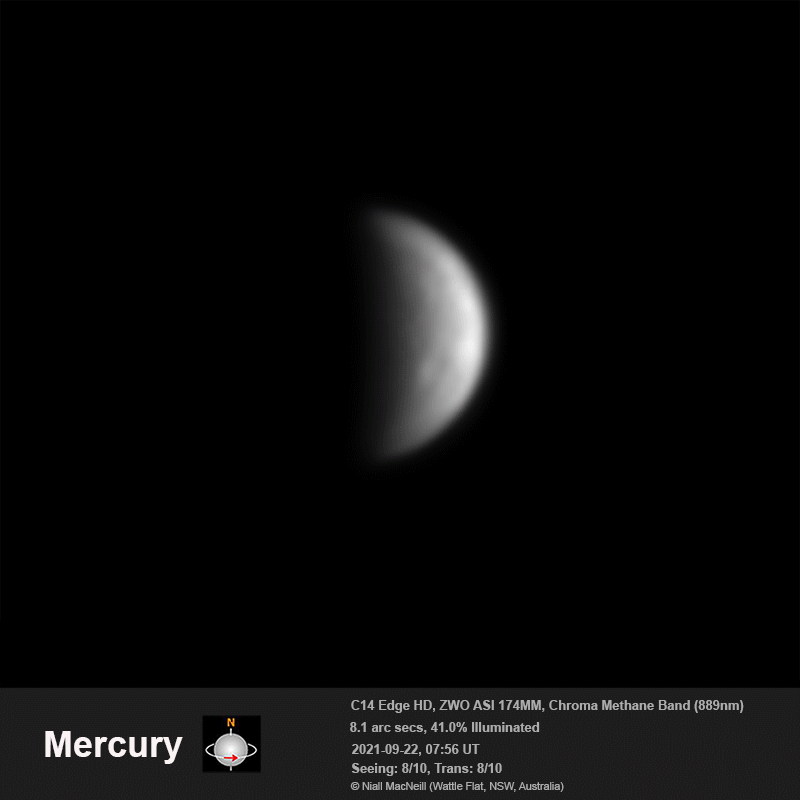
Mercury Image 2021/09/22(UT)
Niall MacNeill
N.MacNeill

| Niall MacNeill |
Before capturing Venus I had a short session on Mercury before it got too low. I decided to use the Chroma Methane Band filter, mainly because, even with the narrowband (20nm), Mercury is so bright that there was no problem achieving the histogram and frame rate. As I see it, the advantage of the CH4 filter over an IR Band Pass filter, is that it obviates any atmospheric dispersion that will be occurring¬across the Band Pass wavelengths. Clearly with Mercury being low to the horizon, atmospheric¬dispersion is at its worst. I have generally found the Methane Band filter gives better clarity than say my 850nm or 642nm¬BP filters. Clearly seen, as Andy Casely identified recently, is the prominent Kuiper crater, south of the Equator towards the Terminator.¬ Again the edge diffraction effect limits resolution near the limb, but the correlation with the WinJUPOS graphic and the Melown Technologies map is quite good. It is pretty clear to me that the bright ray from crater Hokusai, ¬which¬lies beyond the upper right limb, and transects Crater Kuiper can be seen in my image. I also made a GIF animation of my image and the WinJUPOS graphic to make it easier to identify the features.

[Niall MacNeill : Wattle Flat,NSW,Australia]
 ALPO-Japan Latest ALPO-Japan Latest

 Mercury Section Mercury Section
2021/09/25
| 2021/09/19
| |